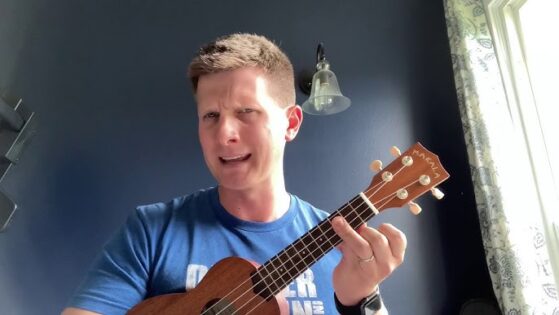
Breathing and Singing | Strengthen Your Voice
Breathing and Singing | Strengthen Your Voice
When you watch a skilled singer perform, it often feels effortless. A single breath carries them through long, soaring phrases, their voice stays steady from beginning to end, and their sound fills the room with ease. To the listener, it seems as though the music simply flows out naturally. Yet, behind that effortlessness lies the powerful connection between breathing and singing—a connection built on control, strength, and technique.
This is where the deep connection between breathing and singing becomes clear. Singing, at its core, is controlled breathing shaped into sound. Without breath, the voice cannot exist. But not all breathing is the same. Everyday breathing is shallow and automatic, just enough to keep us alive. Singing, however, requires something more deliberate—breathing that fuels the voice, sustains long phrases, and provides both strength and finesse.
When singers begin to understand this relationship, the difference is transformative. Breath is no longer just a physical necessity; it becomes the very foundation of vocal artistry. Mastering the balance between breathing and singing turns struggle into stability and uncertainty into confident, expressive performance.

Why Breathing and Singing Are Inseparable
Think of breath as the engine of your voice. The vocal folds, much like the strings of an instrument, vibrate to create sound, but they cannot function on their own. It is the steady flow of air that sets them in motion, and without it, no voice can exist. This is why the way you manage air becomes central—not just to producing sound, but also to shaping its quality, sustaining phrases, and building vocal endurance.
With this in mind, it becomes clear that breathing does more than simply keep you alive on stage. It transforms into the very foundation of performance. When breath is managed well, a singer can glide through long passages with ease, control dynamics from delicate softness to powerful intensity, and maintain resonance across the entire range.
On the other hand, when breath support is weak, the voice suffers. Shallow breathing forces the throat to overwork, leading to gasps for air, strained tone, and unstable pitch. The difference between freedom and struggle often comes down to this single skill.
And so, the progression makes one truth undeniable: the stronger your breathing technique, the more freedom, confidence, and artistry your voice will naturally gain.

The Science of Breathing and Singing
To appreciate this connection fully, it helps to understand how the body works when we breathe for singing.
1. The Role of the Diaphragm
The diaphragm, a dome-shaped muscle beneath the lungs, plays a central role in breathing. When you inhale deeply, it contracts and moves downward, creating more space for the lungs to expand and fill with air. This process provides the body—and the voice—with a fuller supply of breath. In contrast, shallow chest breathing works very differently. Instead of engaging the diaphragm, it simply lifts the chest slightly, allowing the lungs to fill only partially. As a result, singers relying on shallow breathing often run out of air too quickly and struggle to maintain steady, supported sound.
2. Controlled Exhalation
Singing requires more than just a deep inhale—it also depends on how you release that air. The vocal cords function best when supported by a steady, consistent stream. Too much airflow causes the sound to become breathy and uncontrolled, while too little makes the voice crack or lose strength.
3. The Support System
The diaphragm doesn’t work alone; it is part of a larger team. Your intercostal (rib) muscles and abdominal muscles join in to form a supportive system that carefully regulates airflow. Working together, they act like a natural pressure valve—neither forcing air out too quickly nor letting it escape too weakly. Instead, they ensure the breath leaves your body at just the right speed, giving the vocal folds the steady vibration they need to produce a clear, controlled sound.
4. Posture and Relaxation
Even perfect diaphragmatic breathing can be sabotaged by poor posture or unnecessary tension. A collapsed chest limits lung capacity, and tight shoulders restrict the natural expansion of the rib cage. The best singers know how to align their bodies so that breathing feels free, natural, and efficient.

How Breathing and Singing Work Together in Music
Understanding the mechanics is only the first step. What truly matters is how breathing translates into artistry. Here’s how breath influences different aspects of singing:
Tone Quality – Steady breath creates a warm, resonant sound. Without it, tone often sounds thin or shaky.
Range – High and low notes require more careful breath management. Supported breathing prevents the voice from cracking or straining.
Phrasing – Musical phrases are like sentences. Just as punctuation gives clarity in speech, breathing at the right moments gives clarity in song.
Expression – Breath is not just about survival; it’s about expression. A sudden swell of air creates drama, while a gentle release creates intimacy.
In this way, breath is not simply a technical necessity—it is the very soul of singing.

Techniques to Improve Breathing and Singing
Mastering breath for singing takes practice, patience, and consistency. The goal is to train your body to support your voice naturally, step by step. Let’s walk through a few key techniques that gradually build awareness, control, and strength.
We begin with diaphragmatic breathing, the foundation of all vocal technique. Place one hand on your chest and the other on your stomach. As you inhale deeply, let the stomach rise while keeping the chest still. Then exhale slowly, allowing the stomach to lower. This practice ensures you are engaging your diaphragm instead of falling back on shallow chest breathing.
Once this becomes familiar, you can progress to the hissing exercise, which takes that same deep breath and teaches you how to manage airflow. Inhale fully, then release the air slowly on a long “sss” sound. Focus on keeping the stream of air steady, and time how long you can sustain it. Over time, extending your duration will help develop stamina and precise control.
The next step is to bring this control into actual music through breath management with phrases. Choose a song and mark the natural points where you should breathe. As you sing, make each inhale quick and silent, then release the air steadily through the phrase. This helps you avoid unnecessary breaks and keeps the music flowing smoothly, just as intended by the composer.
Finally, balance control with calmness using the 4-7-8 method. Inhale for 4 counts, hold the breath gently for 7, and exhale for 8. This exercise not only expands lung capacity but also trains your body to stay relaxed—an essential skill when performing under pressure.

Mistakes That Disrupt Breathing and Singing
Even with the best intentions, many singers develop habits that undermine their breath control. The most common include:
Shallow Chest Breathing – This fills only the upper lungs and leaves singers gasping for air mid-phrase.
Holding the Breath – Some singers mistakenly “hold” air inside before releasing it, which creates tension. Instead, air should flow naturally.
Collapsing Posture – Slouching limits lung expansion and reduces resonance.
Over-Pushing Air – Forcing out air overwhelms the vocal folds, creating a harsh or pressed sound.
Avoiding these pitfalls not only improves singing but also protects long-term vocal health.

How Breathing and Singing Strengthen Your Voice
The beauty of breath training is that its effects extend beyond technique. Strong breathing habits lead to noticeable changes in the voice itself:
Greater Stability – Pitch stays steady without wobbles.
Expanded Endurance – You can sing longer without fatigue.
More Freedom – With breath as your foundation, your throat relaxes, and your voice flows naturally.
Enhanced Emotional Impact – A controlled voice can swell, fade, and float exactly as the music demands.
Ultimately, strengthening your voice through breathing is not about louder singing—it is about singing with freedom, control, and confidence.

Daily Practice to Improve Breathing and Singing
Breath control is not mastered overnight. Just as athletes train their muscles, singers must train their breathing system daily. A few minutes each day can create long-term improvement:
Begin with gentle diaphragmatic breathing exercises.
Add control drills such as the hissing exercise or sustaining notes.
Integrate breath awareness into actual songs so that technique becomes second nature.
Over weeks and months, you will notice your voice feels stronger, more stable, and far less fatigued.

Conclusion | The Lifeline of Breathing and Singing
Breathing and singing are inseparable, moving together in every sound you create. Breath is more than air—it is the lifeline of your voice, the foundation of tone, and the source of both strength and subtlety. When you learn to harness it, you not only support your sound but also prevent strain and open the door to richer expression.
No matter the style, great singers share one quality: mastery of breath. This skill gives them stability, stamina, and freedom on stage. If you want to strengthen your own voice, the journey begins with breathing—practiced daily, refined with patience, and trusted in performance.
At The Mystic Keys, our Western Vocal Lessons Online guide you through this journey step by step. With focused breathing exercises and proven techniques, we help you build the foundation for confident, expressive singing.
Your voice will only be as free as your breath allows. Master it, and your singing will truly soar.
For more information and exciting resources about learning music, visit our website at The Mystic Keys. For more music content and exciting offers follow us on
Facebook, Instagram, YouTube, LinkedIn, Twitter, Pinterest, and Threads,



















